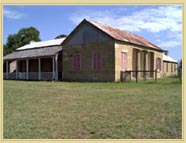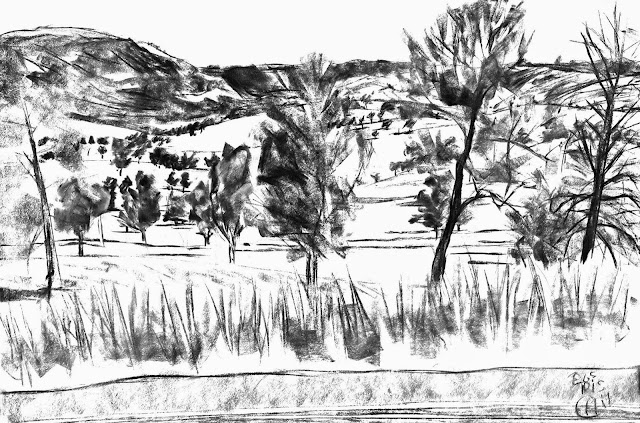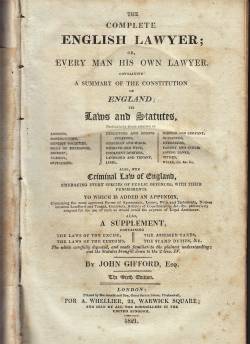Pastoral Life
When TLM-P wrote his memoir about his voyage to Australia, he commented that he was too ill to work outside, 'almost the first time after sixty years of robust health'. That desire for physical activity, backed by sound health, would be a major determinant of the direction his life, and success, took in Australia.
Dalwood
The first thing TLM-P needed was to gain colonial experience, a form of internship to learn the ways of the colony. He did so on a property Dalwood, near Maitland in the Hunter Valley, north of Sydney.1) Dalwood House (pictured)  is now a National Trust Property, but located within the Wyndham Estate Winery - as at 2016, it was not open to the public.2)
is now a National Trust Property, but located within the Wyndham Estate Winery - as at 2016, it was not open to the public.2)
How and why did he end up at Dalwood? The likely reason is his school network. Dalwood was owned by George Wyndham and his wife Margaret. Her father, John Jay, after business losses during the Napoleonic Wars, had 'conducted a school for English boys in Brussels'.3) Was this the one associated with the Rev Drury that TLM-P had attended, or another one? It seems likely that it was this connection that resulted in him going to Dalwood. TLM-P was lucky as George Wyndham was generally admired: 'Respected for his leniency to his assigned labour in the early days and himself a hard worker in the field, George Wyndham considered himself mainly a farmer and pastoralist. He was highly respected within both the local and wider community.'4) George Wyndham kept a diary from 1830-40, and Wyndham family letters have also survived, but these have not yet been checked for any contain a reference to TLM-P.5) TLM-P was also lucky in encountering George in the 1840s and not Wadham Wyndham, who 40 years later in a frenzy of religious mania, slaughtered his entire family.6)
Rocky Creek
Having gained colonial experience, TLM-P was appointed manager of Rocky Creek Station, in the Nandewar Ranges, near Tamworth, in the Northern Tablelands of NSW.7)
 A contemporary view of Rocky Street Station by artist Mick Pospischil.
A contemporary view of Rocky Street Station by artist Mick Pospischil.
The station appears to have been owned by the Pringles, but to date, no further information is known about the station, its owners, or how long TLM-P worked as its manager. Historian Gordon Reid states that, in May 1843, TLM-P met up with Leichhardt and they rode to the Moreton Bay district.8)
Rosewood
Despite the sacrifice his mother had to make to give him a few sovereigns, in 1843 he had enough capital to acquire and stock a property, Rosewood at Moreton Bay (near present day Ipswich). From this stage he lived in what became, from 6 June 1859, the colony of Queensland.9) He was too late to be given a free land grant as those had ceased in 1831. Until 1836, the only land that people could legally buy was within Nineteen_Counties, an area bounded by Kempsey in the north, Batemans Bay in the south and Wellington to the west. From 1836, the situation of the large numbers of people who broke that law, called squatters, was regulated: from then they could occupy the land as theirs (regardless of traditional owners) for £10 per year. TLM-P became one of these squatters. When he wrote to the Ludwig Leichhardt in September 1843, he mentioned that he intended 'selling my station and believe I have already got a purchaser'. He had stocked it with sheep and horses.10) For more on TLM-P's friendship with the German explorer, click on Leichhardt.
TLM-P and Matilda were now living in isolated conditions and needed to be reasonably self-sufficient. That included not only medical books but also at least one on the law.
 This book, courtesy Sarah Godden, is inscribed, 'Thomas Lodge Murray Prior/ Logan River Moreton Bay./January 1845'.
This book, courtesy Sarah Godden, is inscribed, 'Thomas Lodge Murray Prior/ Logan River Moreton Bay./January 1845'.
Broomelton
TLM-P went into partnership to acquire his second property on 24 September 1845. His partner, Hugh Henry Robertson Aikman11), had owned Broomelton since 1842, but presumably needed to share the load.12). Broomelton was on the Logan River, 35 miles from Brisbane: TLM-P bought out Aikman's share of the property in 1850.13) He subsequently sold it in September 185314)
Hawkwood
In 1854, TLM-P bought Hawkwood on the Auburn River in the Burnett district (north of what is now called the Sunshine Coast) and ran sheep on it. He bought his young wife and family to Hawkwood at a time of bitter war between the white settlers and the Aboriginal people who had lived there for some 50,000 years. A flashpoint occurred in 1857, in what is now known as the Hornet Bank massacre.15) This was the murder of eleven of the Fraser family and staff who lived on Hornet Bank station; the women were also raped. The murders were by Jiman (or Iman), the local Aboriginal tribe, reputedly in retaliation not just for the seizure of their land, but also for killing and rape of their people by Frasers and other men.
In his memoir of this time, TLM-P stated that he believed that the Hornet Bank murders were part of an Aboriginal conspiracy to exterminate the whites. He was clearly prepared for armed conflict when, he claimed, there was a gathering of Aboriginal people some six weeks after the Hornet Bank tragedy. Hawkwood employed three unnamed Aboriginal men and one woman (from the coast, not from local tribes), a Welshman gaining colonial experience Earnest Davies; Sydney Ling, a German doctor, and' one or two others'. They had 'plenty of arms and ammunition'.16) In his memoir, he states that he and some others decided on a preemptive strike against the local Aboriginal people. Leaving shearing to others, a vigilante troop of 13 or 14 people, including TLM-P and two of his Aboriginal employees) set off. He claimed that the Aborigines in the party wanted to kill women and children as well, but he prevented that by stating he would withdraw the Hawkwood group if he saw any woman or child hurt. Davies, in his reminiscences, states that they killed as many men as they could and retrieved items hat had belonged to the Frasers. They also appeared to continue on their deadly rampage, killing aboriginal employees of Redbank station.17) According to TLM-P 18)
TLM-P and his troop returned to their properties after the Redbank murders19) These murders in all are now thought to have a toll of around 300 Aboriginal people. TLM-P was also one of four magistrates who wrote to the Colonial Secretary demanding harsher penalties for Aboriginal resistance20) In his memoirs he also considered it reasonable that William Fraser, who had survived the Hornet Bank massacre of his family, embarked on a lifetime of indiscriminate killing of Aboriginal people. William Fraser became a folk hero among whites; he is also noted in the Wikipedia entry as 'one of the greatest mass murderers in Australian history'. He subsequently died of old age without facing prosecution or his murders.
Information about the Hornet Bank massacre has been complicated not only by an unwillingness to acknowledge that it was a result of a war for the possession of land, but also by the unreliable recollections of Rosa Praed. As Reid (pp.iv,77) comments, Rosa in her memoirs21), was an unreliable witness. The problem was not so much Rosa, but that modern readers rarely appreciate that mixing memoir and fiction “was not considered a fault in Victorian Life-writing - however annoying to the historian.” (Megan Brown and Lucy Sussex, Outrageous Fortunes:The Adventures of Mary Fortune, Crime-writer, and Her Criminal Son George, La Trobe University Press, 2025, p.33). That is, Rosa had a novelist's imagination and needed her memoirs to sell. She did not write them as documentary evidence for future historians.
TLM-P sold Hawkwood a year after the Hornet Bank massacre. The cause was an outbreak of scab among his sheep: he was apparently popular with his neighbours as they are said to have gifted him some 900 sheep to help replenish his flock.22)
(to do: Clarke, Patricia. Turning fact into fiction: the 1857 Hornet Bank massacre, M A R G I N: life & letters in early Australia.)
Cleveland/Ormiston
After selling Hawkwood, TLM-P bought a banana plantation at Ormiston/Cleveland (some 25km from central Brisbane).23)
Maroon
A banana plantation did not suit, so TLM-P tried again, selling it to buy Maroon station in November 1864. It was in the Logan district.24)